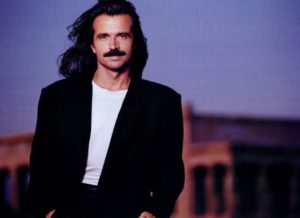Should You Be Advertising on Digital Radio?
Yes.
Okay, we’ll explain. Two of the top five most popular apps are used for streaming music. People in America now spend more of their time using their smartphone than their TV. Just over half of Americans ages 12 and up listened to internet radio in the past month.
So there’s the facts—here’s how it can work for you.
The digital data that’s collected from people is amazing. The internet knows which Ikea couch you like, which food you looked up the calorie count of, and which car you were fantasizing about but won’t ever buy. (You can custom build your own Ferrari on their website and it’s super fun, but now I keep getting ads from them because they thought I was actually serious. Ha.)
Pandora, Spotify and iHeartRadio have a butt-ton of this info. You can target on these platforms with almost pinpoint accuracy. You can target demographics, location, social media connections, income/education/profession, listening behavior, mood and more. One of the best parts is that the music (and the ads) go wherever the consumer goes. It’s on their phone, in their car and on their computer. You can reach them whether they’re driving, at home or at work.
On Spotify, you can target by playlist. Let’s say you’re selling some kind of work out gear. You can direct your ads to people who specifically listen to work out themed playlists. Spotify CMO Seth Farbman says, “You start getting a real picture of the complete lifestyle. We’re at a point now where we are gathering so much data so rapidly that we’re constantly reimagining what can be done with it.”
Some companies are reevaluating their radio budget to include digital, satellite and traditional. Advertising director Ed Gold at State Farm says, “We are looking at all radio type advertising as audio. When I look at my overall budget—that which used to be called the radio budget but is now called the audio budget—we are going where the consumer is, so if more consumers are going to digital radio, we are following them.”
Another great thing about digital radio is that it’s more personal. This is because most music streaming platforms only play one or two ads during a break. You know, they always say to be either first or the last in the commercial break—this way you always will be. The language is even different in digital radio ads for this reason. They often break the fourth wall of advertising by saying something like, “Hey Pandora listener, we’ll get right back to your station, but first…”
The future of digital radio looks pretty bright. It’s growing every day and the targeting is continuously getting better. It’s also pretty cost effective. We definitely recommend advertising on digital radio, but first look into which platform is right for you. They all have their differences, benefits and challenges. And if you need something produced to throw on Pandora, we can help you out!
Digital Radio – A New/Old Friend
Advertisers want to meet the eyes and ears of consumers over as many mediums as they know they use. Today’s advertising campaign often entails buying space on the internet, on television, and radio – but are advertisers wrongfully looping together all forms of radio into the kind that exists only during our daily commutes?
Years ago, radio was just that: radio. Good ole’, terrestrial radio. An advertiser would produce a spot, send it out over the airwaves, and reap the rewards. Today, digital radio is massively popular, particularly among young people. While fundamentally the same, digital radio has its stark differences to its terrestrial counterpart.
Many companies enter the brainstorming process unsure of whether their television and online ads should be as similar as possible or dare to be different. You may be looking to hit different demographics with each medium. You may be looking to highlight many different things in the same campaign. To some, it may seem that different issues beg equally different solutions; however, consistency is key in your campaign.
The more consistent and similar your advertisements are across mediums, the more instantly recognizable each ad will be as belonging to your brand. While some differences among ads of different mediums can be helpful, if not inevitable, it’s important to maintain the same ideas and perhaps some key phrases between the ads. For example, we know that the audience for digital radio is younger than that of terrestrial radio. Digital radio has an enormous reach in a demographic that other mediums haven’t even considered: Generation Z, the post-millennials. While terrestrial radio is popular among all age groups, it would just make sense to alter your ad campaign to suit a younger audience when crafting it for digital radio. You may want to change some things about the creative execution of this new digital radio ad, but not its key ideas. No matter how or where your potential customer is listening to your ad, they should recognize it as yours.
Digital radio is an exciting new platform, but it’s not a brand new concept. Just like when crafting a campaign for radio and television, internet, or any other paired medium, similar and consistent wins the race.
Sources:


